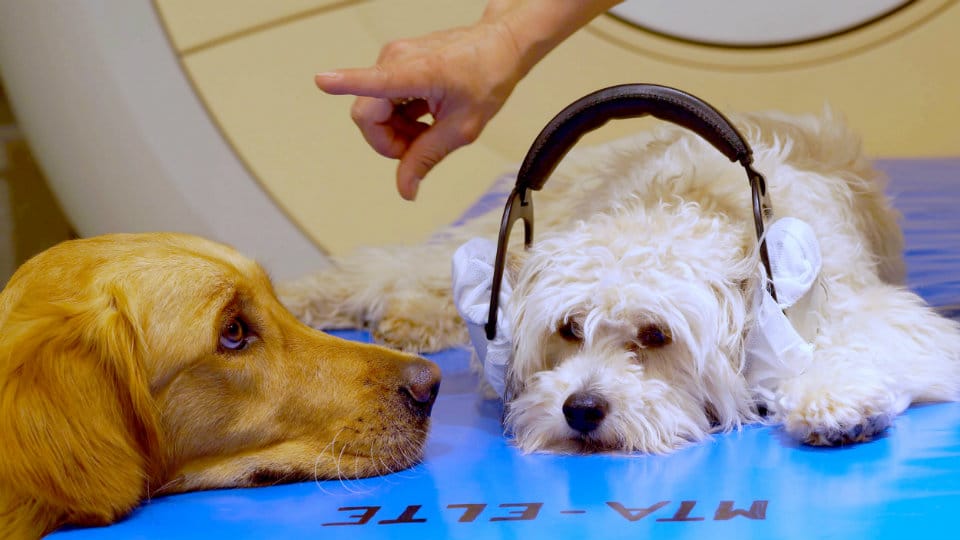By Maneka Gandhi
Statistically 62% pet owners claim that their pets understand what they say to them. It is scientifically proven that in its lifetime a dog/cat learns at least 200 words. Animals learn commands like sit, stay, no, come here, etc. An animal will easily understand what you are saying when:
- Usage of same words
- Usage of same tone
- Same accompanying body language
- Always Remember: The animal in your house learns many languages – the household help speaks in another language to the children and the parents. But do you understand a single word of what the dog/cat says. After all, they talk to each other all the time. So who is smarter, we or the animals?
Do cats harm little children or babies?
No. You might find a cat in the crib, but that is because they seek warmth and comfort.
Does sterilisation of dogs help in reducing their anger?
Specific characteristics of dogs, like mounting, straying, aggression towards humans or other dogs are related to mating. Sterilisation/ castration in dogs (both male and female) is estimated to reduce anger by 62% in the case of inter-dog relations. Territorial, fear-induced aggression, and food aggression does not get altered.
Can a cat and dog live together under the same roof?
Yes, a cat and dog can live together. It is much easier, and better, if they are brought in the house as a puppy and kitten because they can bond.
Why is bathing and brushing important for pets?
For Dogs: Regular grooming is good for the pet’s coat and skin. Brief, frequent brushing sessions, combined with an occasional bath, keep your dog clean and comfortable. Routine brushing enhances your dog’s appearance by distributing natural oils throughout the entire coat. It also prevents hair from knotting or clumping and whisks away dirt, burs, and other outdoor debris. Dogs need to be bathed about every three months.
For Cats: Brush your cat regularly. Your cat grooms itself all the time and is likely to swallow hair which might block the stomach/intestines when it forms balls. It won’t take in as much hair, especially if you wipe with a clean damp cloth after brushing to pick up any loose hair. Skip the baths. Cats don’t really need baths as long as they’re able to groom themselves. Check ears weekly. If your cat’s ears are dirty, clean them with a piece of cotton or gauze. Or ask your veterinarian about an ear-cleaning solution.
Is cleaning a fish tank necessary?
For your fish, your fish tank is home and your pets deserve to live in an environment that is clean and healthy. If you set up the aquarium right the first time, it will greatly minimize the amount of maintenance you have to do. With proper filtration, your tank water should remain clear and you shouldn’t have to replace your filter media more than once a month. As always, however, each tank is different, so you will need to go through a period of trial and error to determine the needs of your particular tank.

The schedule for cleaning your fish tank will depend primarily on:
- Tank Placement: The reason the setup is important, when it comes to maintenance and cleaning, is that if you place the tank in a location hard to get to, chances are it will not be cleaned on a regular schedule.
Therefore, make sure the placement of the tank is such to give you adequate room.
- Tank Size: Interestingly, a larger tank actually requires less maintenance than a smaller tank. The reason is that the larger tank has more water volume, meaning the waste excreted by the fish, along with chemicals and other particles, are dispersed over a much larger area. Therefore, if you buy a 10-gallon tank, as opposed to a 50-gallon tank, you can expect to clean the smaller one more often.
- Filtration System: A filtration system is crucial to keeping the tank clean and the environment healthy. Many people will use biological filtration, which allows the right amount of “good” bacteria to grow while maintaining the proper level of Nitrite, coupled with a mechanical filter or chemical filter. The mechanical consists of a box that fits within the tank, in which some type of media is used to filter out waste and other particles. The chemical filter uses chemical media, such as carbon or chemical resins, to absorb the waste.
- Feeding Habits: One of the most common mistakes made by fish owners is that they feed the fish too much and too often. When there is excess food in the water, it causes pollution. Therefore, purchase the appropriate food for the fish you have and read the instructions to feed them, only as much as they will eat in one setting and to know how often they should be fed.
- Number of Fish: The general rule for fish is that for every gallon of water you should have no more than one-inch of slim-bodied fish. When a tank is filled with too many fish, there is excessive waste, food particles, and chemicals floating around, making maintenance difficult as well as the tank unhealthy.
- Water Check: Look at the water daily to ensure it is not cloudy, does not have a foul odour, and that nothing out of the norm is floating around
- Plants: If you keep live plants in your fish tank, be sure any dead leaves are removed and excess plant growth trimmed.
- Algae: Using an algae magnet or scraper, clean off algae from the front glass as well as decorations.
- Water Change: Using a siphon hose, remove large debris from the surface and then with a bucket nearby, siphon about 15% of the tank’s water into the bucket. When finished, replace the water with clean tap water that has been treated for chlorine or chloramines. While doing this, you might place a stiff plastic divider between the area you are cleaning and the fish so that you do not accidentally suck any up in the tubing. Additionally, with the siphon running, you can tap the tip down into the gravel to help remove any fallen debris.
- Glass: Take a clean cloth and spray it with window cleaner, away from the tank so that none gets in the water and then, simply clean off the front and side glass areas.
You may not have to perform all of these tasks every week. How much you will have to clean your tank depends on the factors that were listed above, so tailor your maintenance schedule to the needs of your specific tank.








Recent Comments